This Billion dollar Jugaad is better than Sex and earns India billions of dollars in profit every year.
All your clothes that you, or people in the west wear today are better fitting, just because of this Jugaad.
But first we need to understand how garment manufacturing works, so you can appreciate this excellent Jugaad, that is done on each and every piece of clothing you wear.
The first step in manufacturing the garments, is cutting the large rolls that comes out of knitting machines and laying the rolls flat on the table.
A pattern of the garment is made and the same is placed on the table after laying the fabric.
Different patterns are made for different sizes.
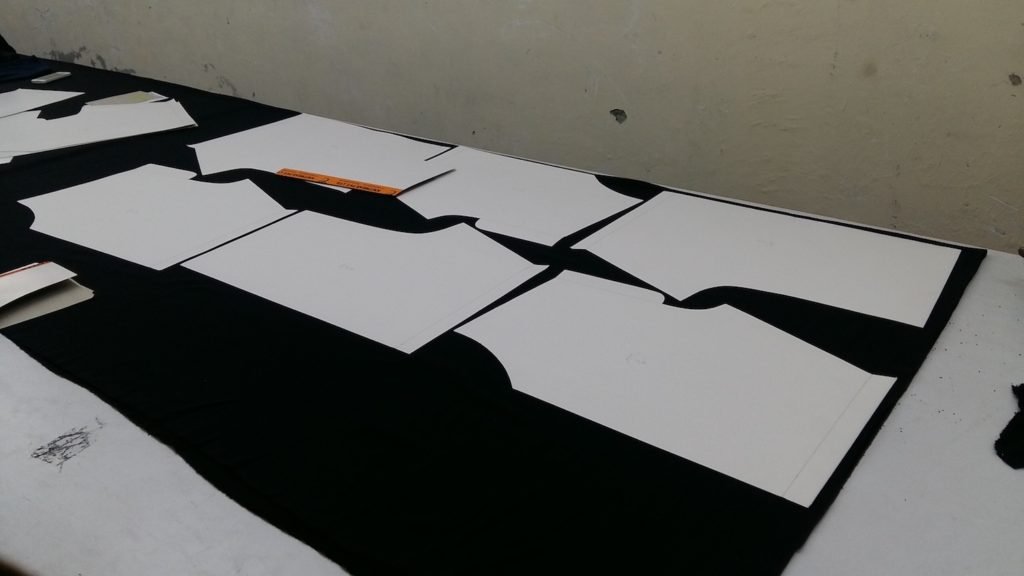
The same would be clear from the above pic. Now obviously, the back and front of different sizes are cut according to their patterns.
From the right in the above pic, you can see patterns of a “Nicker/ Lower” being placed on the fabric in decreasing sizes of XL, Medium, Large and small.
After marking is done, the pieces are cut and sent to the factory floor for stitching.
Now, for every design, there can be hundreds and even thousands of pieces lying around the stitching floor. As a T-shirt manufacturer, this is a big concern for us.
How do you distinguish between different sizes?
Below is a pic I took of our factory floor, that I just took for this post.
The biggest error here, would be to join the front of a medium size with a back of an XL. Marking them with numbers does not always help, as many of the workers operating the stitching machines are illiterate. So, how do you solve this massive error prone chain.
These pieces are also sent to printing, where every piece of different size will have a different print pattern on it. Look at the below pic of our printing unit, and you would understand the gravity of the situation.
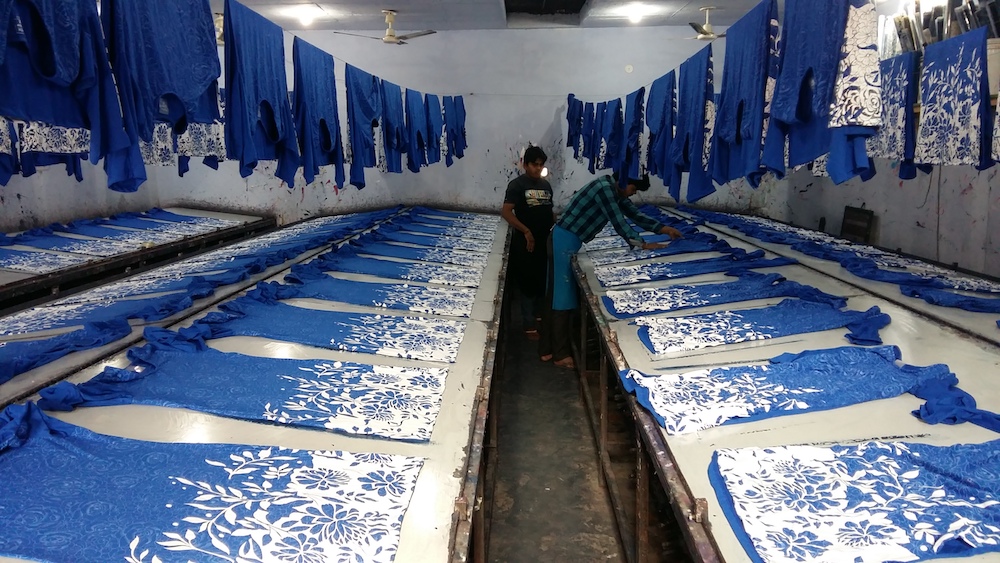
Now, do note that India is one of the biggest garment manufacturers in the world. How do Indian factories produce millions of clothes without such errors on the factory floor, when its workers are illiterate, though expert stitchers on their machines.
Here, comes the Billion dollar “Jugaad” or Hack.
Every piece when cut on the tables, is marked for its size using a cut called a “TAK”.
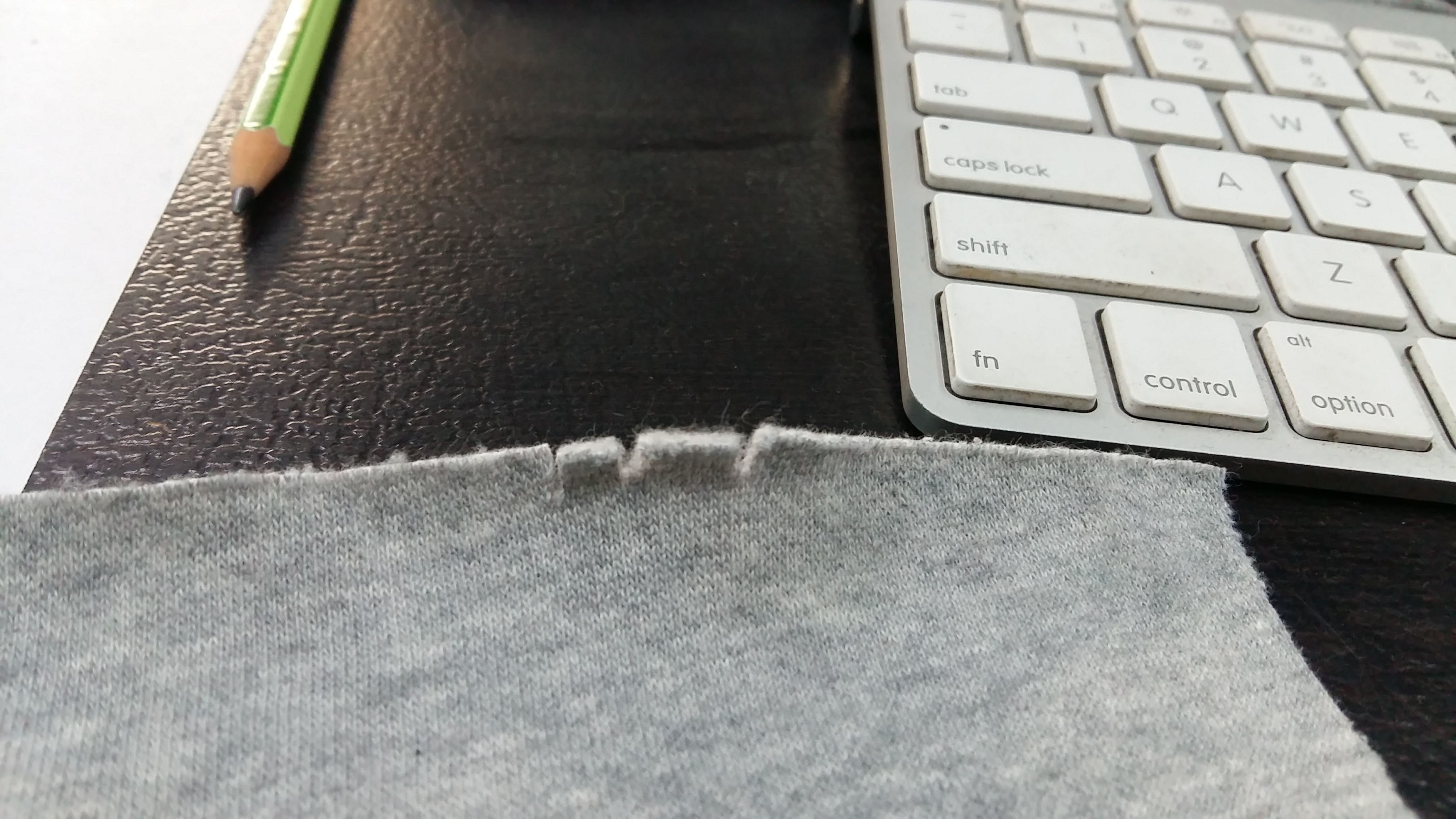
Above is a fabric piece with three “taks”.
One “tak” means small. Two “taks” mean medium. Three “taks” mean large and so on.
So, every person in the chain checks for the “tak” on the piece. Using modern production line system, invented by Sir Henry Ford, every person in the chain is assigned a “tak” to work on.
So the person stitching any garment knows he/she has to work on their assigned “tak” only. This assures that the person stitching clothes and assigned a “one tak”, will pick up pieces of small size only.
These cuts or “taks” are eliminated during the final stitching process, and you would never know that such a system led to your garment, a well fitting one!
I was amazed by this system, which I recently learned when I started my own garment factory.
Small ingenuities like these, run our factories, employ millions of people and generate billions in profits.
We also make customized t shirts and custom hoodies India, and because we are manufacturers ourselves, our rates are around 30% less and quality better than the market.
We have named the venture as CustomBaba.
These ingenuities are what powers our factories. Probably us, in the startup world can learn from these to improve our processes, and decrease our costs of operations.
Do like or share the article, so it reaches more people!

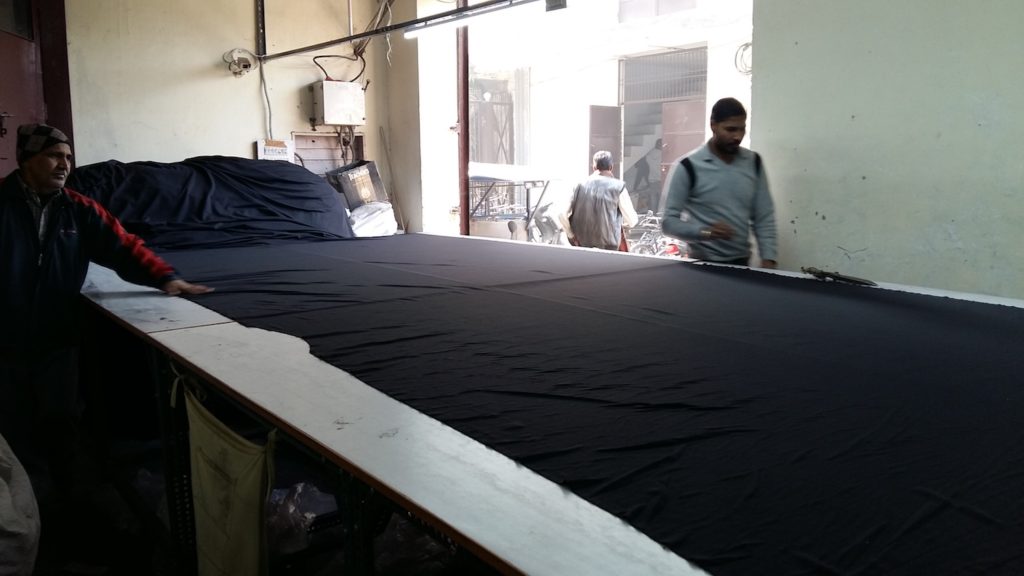
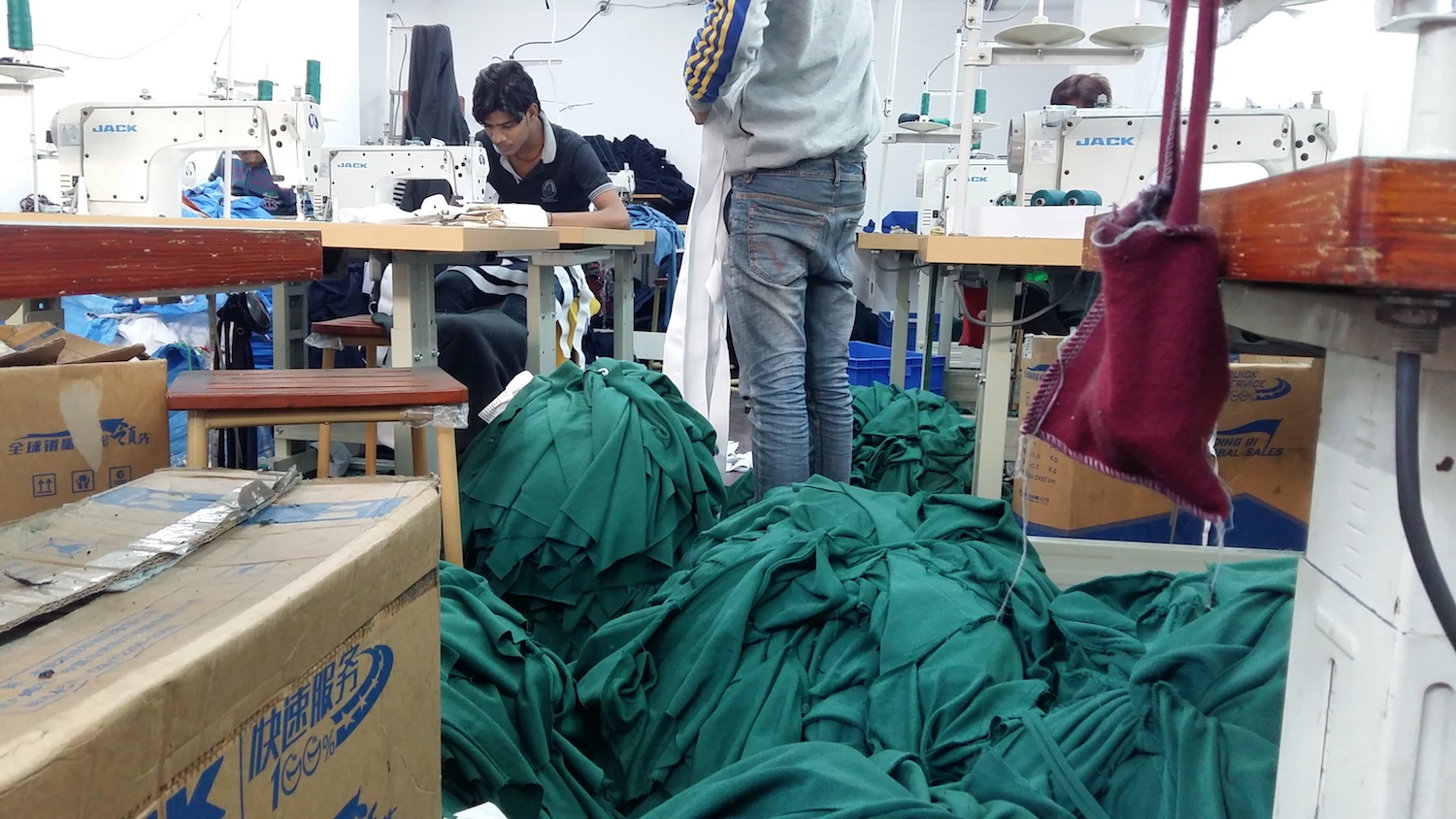





Pingback: Garment retail chain | building from scratch | Learn commission models
Pingback: Ykk zips | A 6 billion dollar conglomerate just sells zips!